Affiliate links on Android Authority may earn us a commission. Learn more.
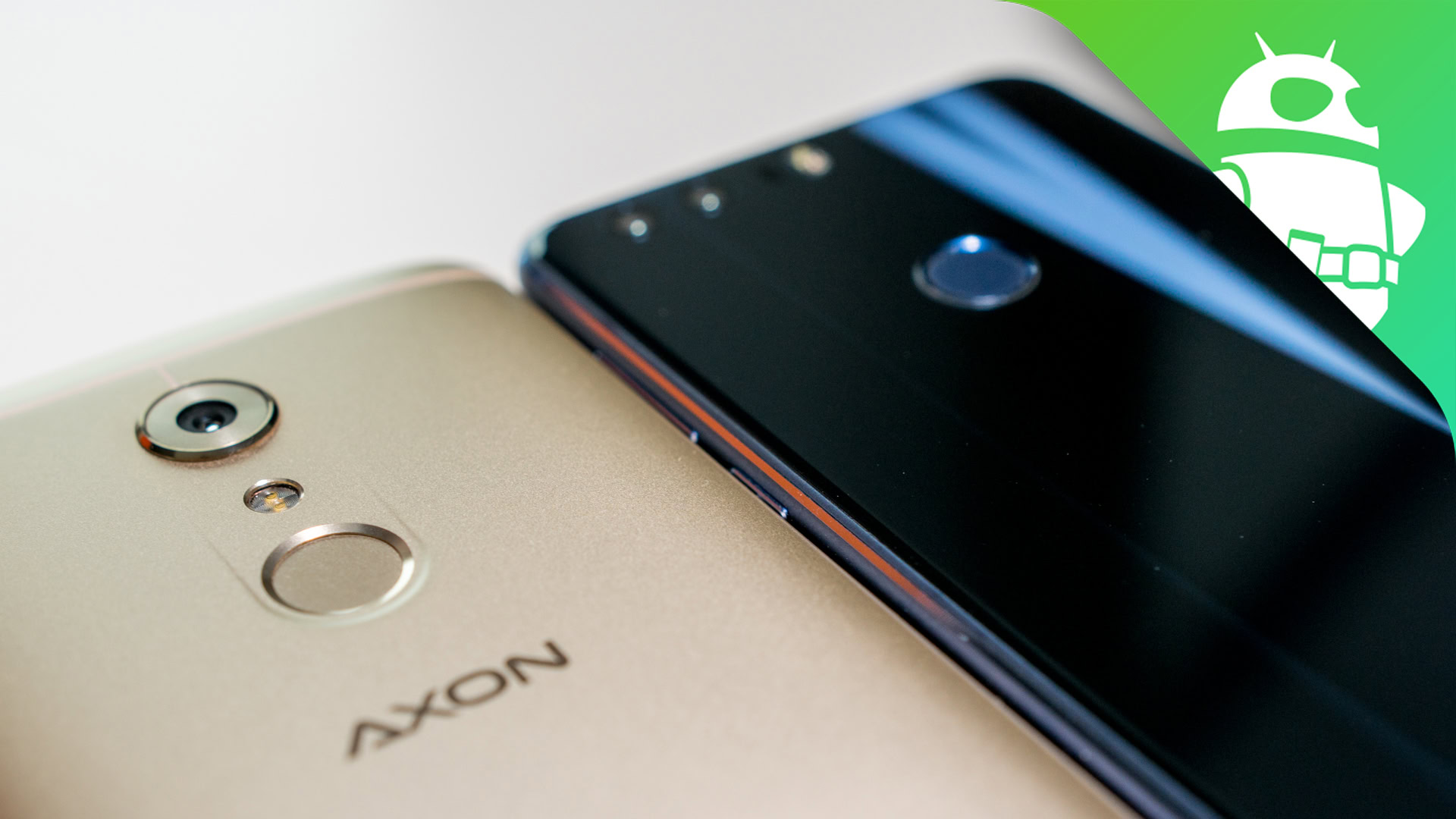
ZTE Axon 7 vs HONOR 8
August 24, 2016
ZTE Axon 7
What we like
What we don't like
ZTE Axon 7
Chinese manufacturers ZTE and HUAWEI have been in the telecommunications business for decades, each having produced a number of excellent smartphones at affordable prices. Following moves away from subsidized devices in the United States, the demand for flagship smartphones that won’t break the bank has never seemed greater.
Related:
- ZTE Axon 7 review
- ZTE Axon 7 hands on
- HONOR 8 hands on
- HONOR joins the ‘flagship killer’ fray with the HONOR 8
Consequently, we’ve seen competition in this segment grow considerably, and now have comparable options from both Chinese manufacturers. With matching price tags and a similar specifications sheet, how do these smartphones compare? Let’s take a deep dive with our ZTE Axon 7 vs HONOR 8 comparison!
Design
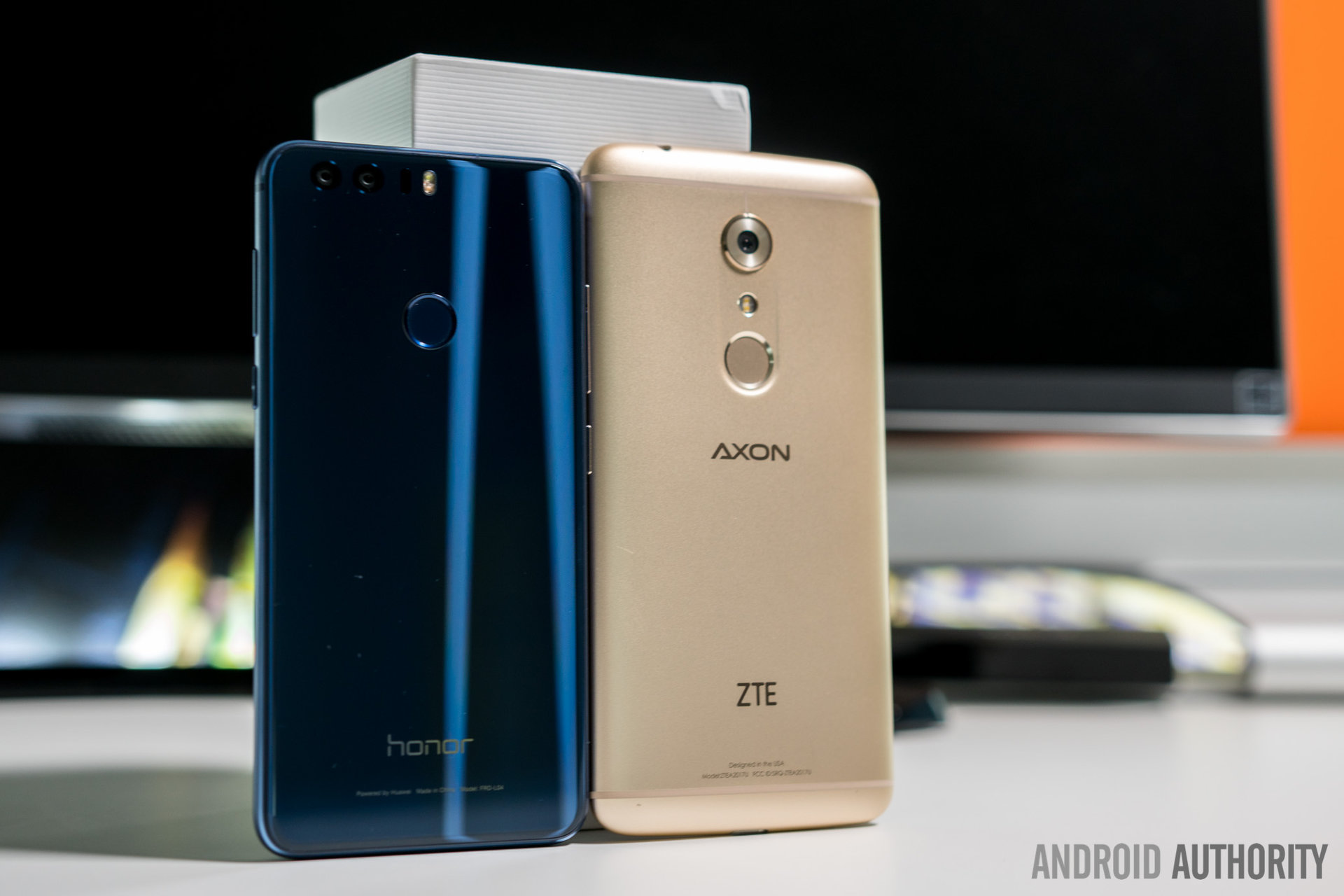
ZTE and HUAWEI have taken two very different approaches to design; whereas the Axon 7 embraces a large aluminum unibody free of any edges, the HONOR 8 opts for a more compact dual glass panel design, held together by an aluminum band. The HONOR 8 is both thinner and lighter than the Axon 7, although the Axon 7 has a curved back, unlike the HONOR 8. With that said, the HONOR 8 is free of any camera bumps, unlike the Axon 7.
I personally prefer the Axon 7's in-hand feel, but I can definitely see the HONOR 8's compact appeal
As for the actual handling experience, you’ll likely find the HONOR 8’s smaller size more comfortable and the Axon 7’s shape more ergonomic. As someone with fairly large hands, I personally prefer the Axon 7’s in-hand feel, but I can definitely see the HONOR 8’s compact appeal. In addition to that, the HONOR 8’s flat edges are also very helpful when trying to grip the phone.
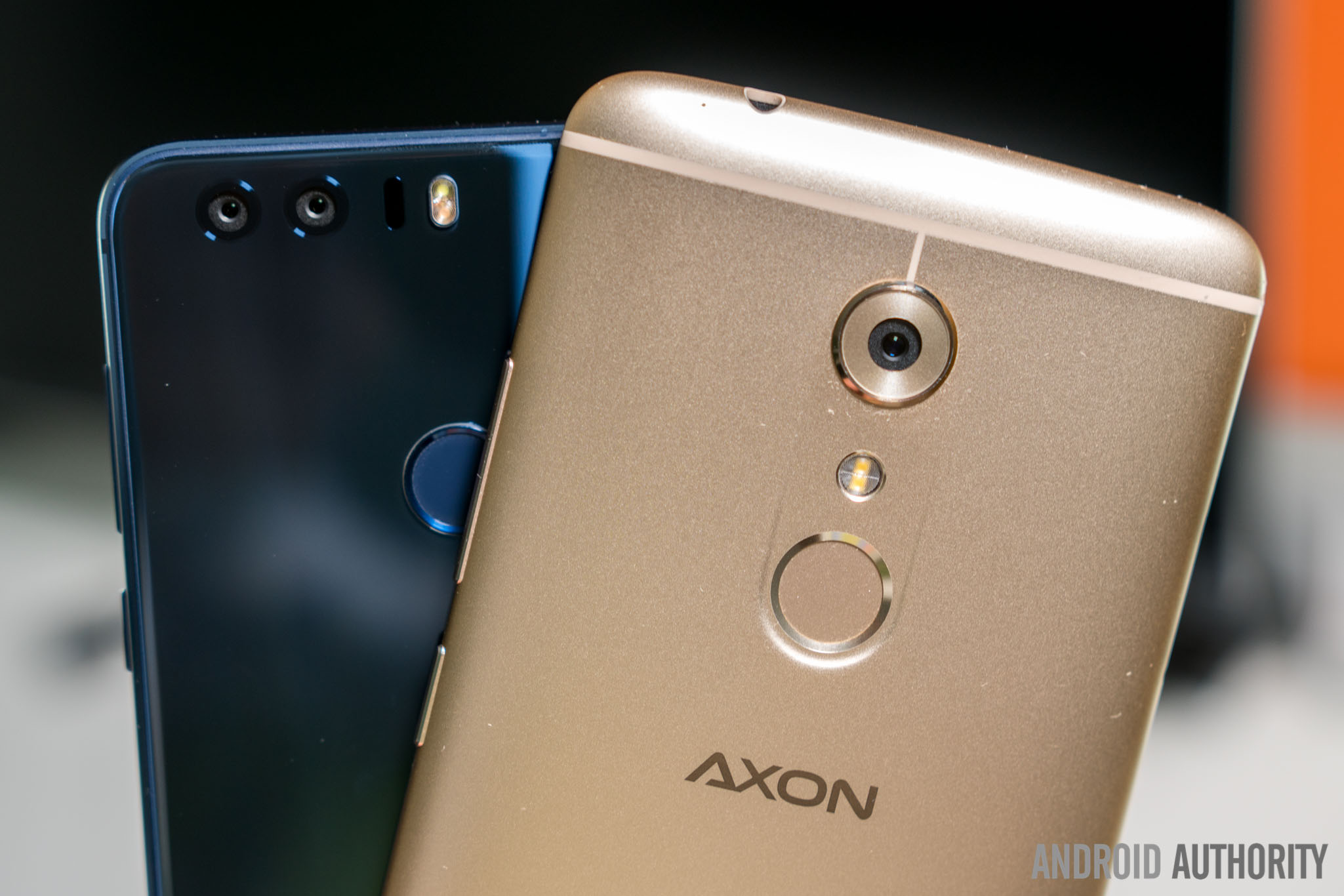
Both handsets can be quite slippery, with the Axon 7 being especially bad in the hand and the HONOR 8 being especially bad on uneven surfaces like a couch cushion. With that said, both of my units have held up well to a number of accidental drops, and build quality seems to be top-notch for both.
Both of my units have held up well to a number of accidental drops
Still, a case wouldn’t be a bad idea. With the Axon 7, a clear case is included in the box, unlike with the HONOR 8. HONOR has, however, announced a few official cases that preserve the HONOR 8’s beauty. Picking one of those up would also eliminate the need to clean fingerprints off of the rear glass, which can add up surprisingly quickly.
The power button, volume keys, SIM door, and USB Type-C charging port have matching positions on each unit, although the headphone jack on the bottom left on the HONOR 8 opposes the Axon 7’s top right position. This makes it easier to charge the HONOR 8 while listening to music, but does make taking the phone out of your pocket to use it a bit more challenging.
Unlike the Axon 7, the HONOR 8 has an IR blaster for controlling televisions and household appliances. It’s not a must-have feature for many people, but it’s certainly a nice addition on an affordable device and something fewer devices include these days.
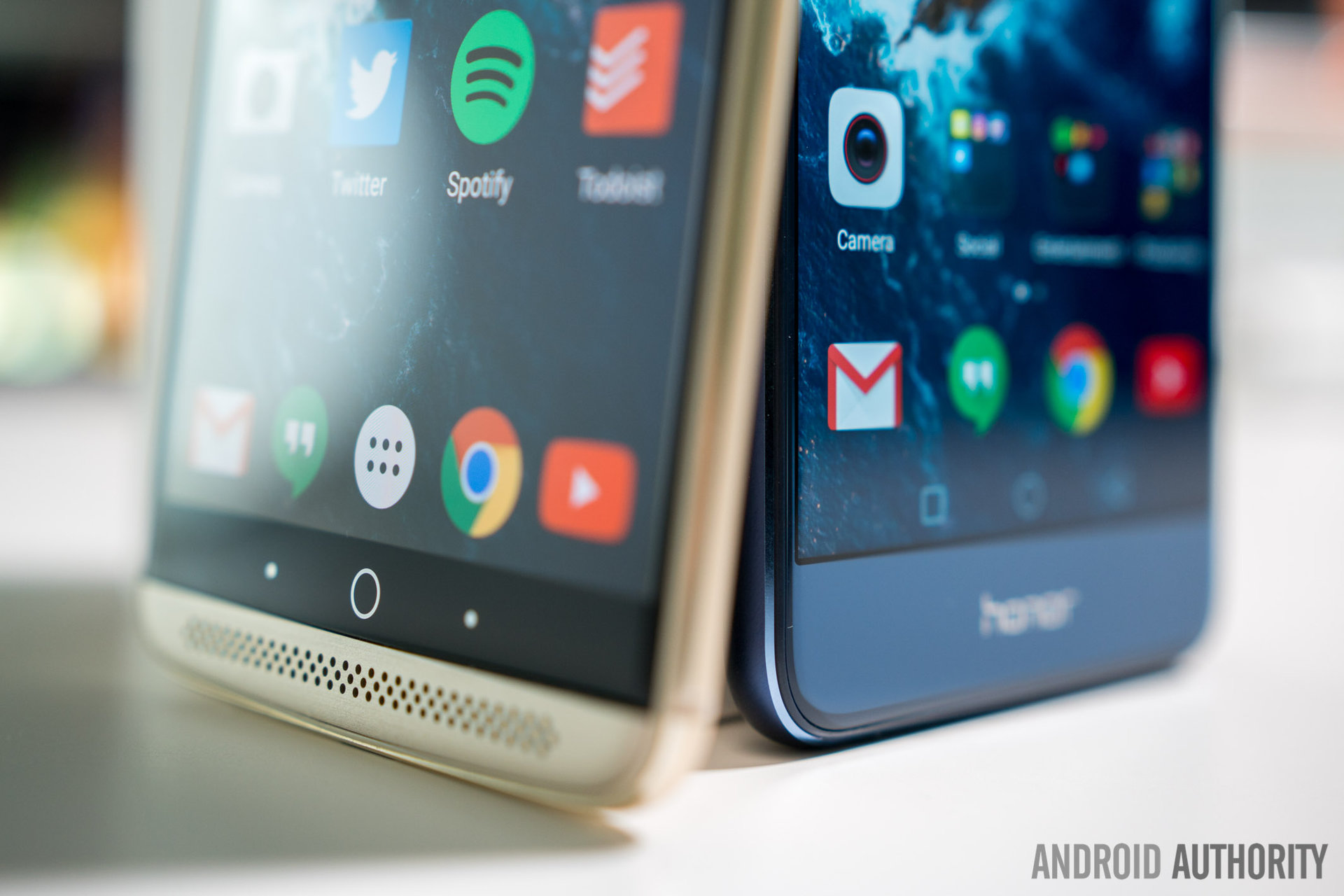
Although I would have liked to see HUAWEI place capacitive keys in place of the “honor” chin branding on the HONOR 8, I still prefer the HONOR 8’s on-screen navigation keys over the Axon 7’s capacitive keys. Unfortunately, the Axon 7’s keys are not illuminated nor are they easy to press because of their close proximity. Both phones give users the option to change the key layout in the software settings, which is always a great option to have.
Display
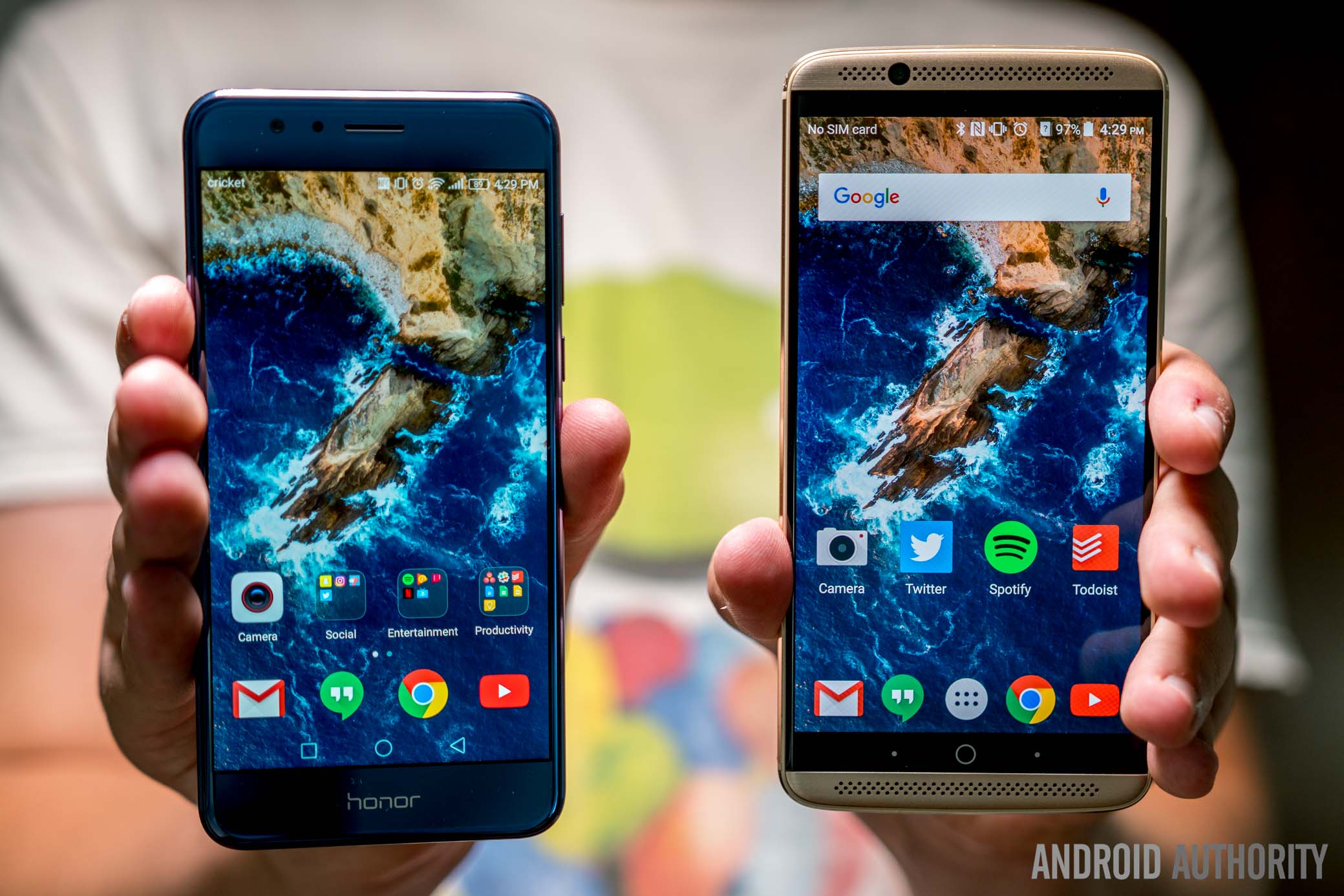
In person, the Axon 7's display is slightly better
On paper, the ZTE Axon 7 delivers a bigger 5.5″, higher-resolution Quad HD display compared to the HONOR 8’s 5.2″ 1080P display. In person, the Axon 7’s display is slightly better too, as it offers more pixels per inch, slightly greater contrast, and more accurate color reproduction. The Axon 7 panel is an AMOLED while the HONOR 8 comes with an IPS display that’s had the saturation and contrast bumped up to simulate an AMOLED panel. Each display also offers decent sunlight readability.
I did notice that the auto-brightness feature on the HONOR 8 is very buggy, however. In addition to frequently setting brightness values too low, the HONOR 8’s adjustment slider likes to reset itself to the minimum value after being idle for a few minutes. This is very annoying, especially when trying to use the phone outdoors, and I ultimately decided to just turn the feature off completely. The Axon 7 does not have issues with auto-brightness.
Performance
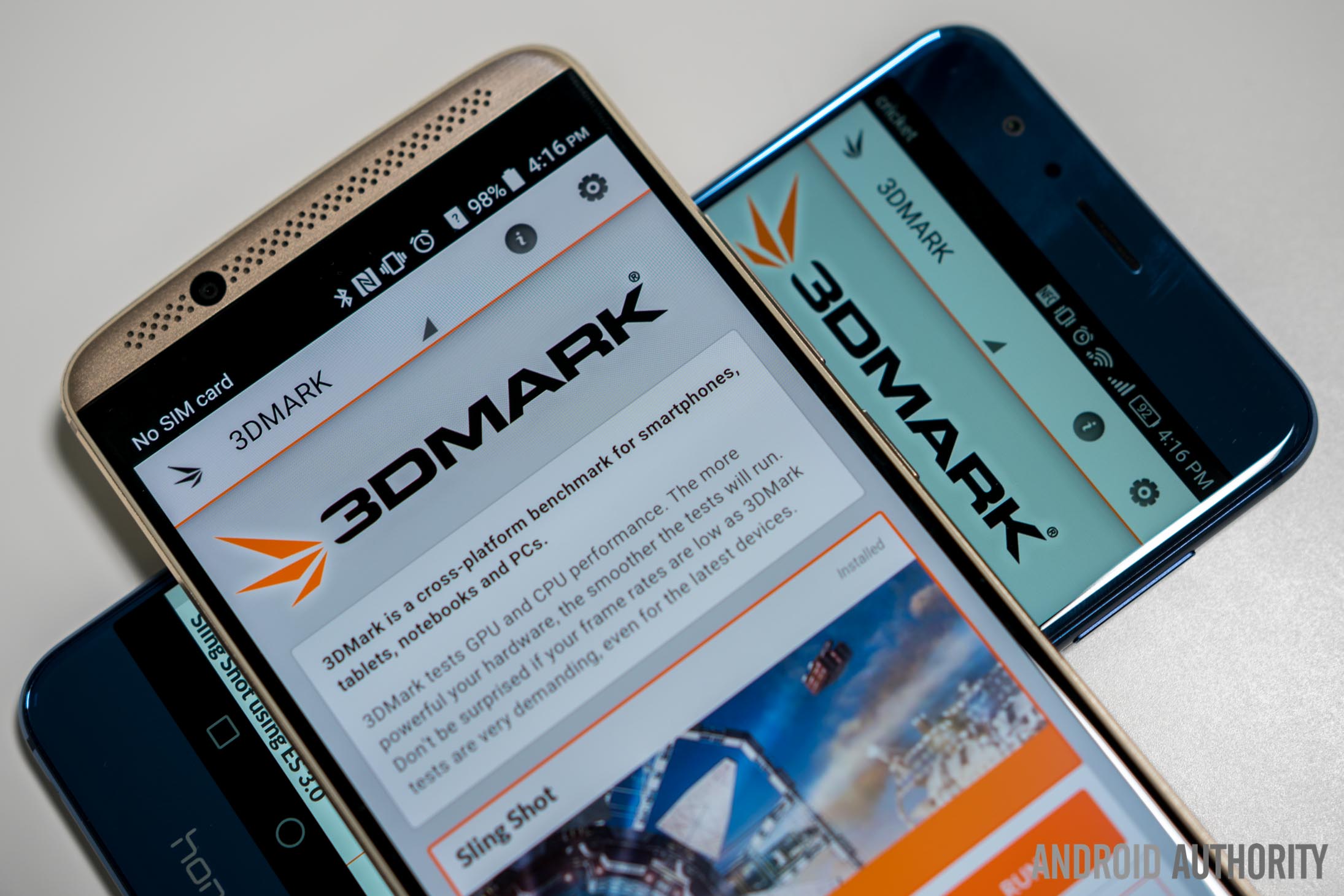
While the ZTE Axon 7 is powered by the popular Qualcomm Snapdragon 820 with the Adreno 530 GPU, the HONOR 8 is instead using HUAWEI’s own in-house HiSilicon Kirin 950 with the Mali-T880 MP4 GPU. Both handsets include 4 GB of RAM.
ZTE Axon 7 benchmark results:
HONOR 8 benchmark results:
Everyday performance is very similar despite these differences. Apps launch quickly and each phone’s interface is very responsive. There’s really nothing to complain about with either handset.
With that said, while gaming performance is currently similar, the Axon 7 has the more powerful and therefore more future proof GPU. For example, in a 3Dmark test, the Axon 7 with the Adreno 530 scored a 2580 whereas the HONOR 8 with the Mali-T880 MP4 scored a 964. At the end of the day though, both phones pack a decent amount of punch that puts them on similar ground to much more expensive flagships currently on the market from Samsung, HTC, LG, and others.
Hardware
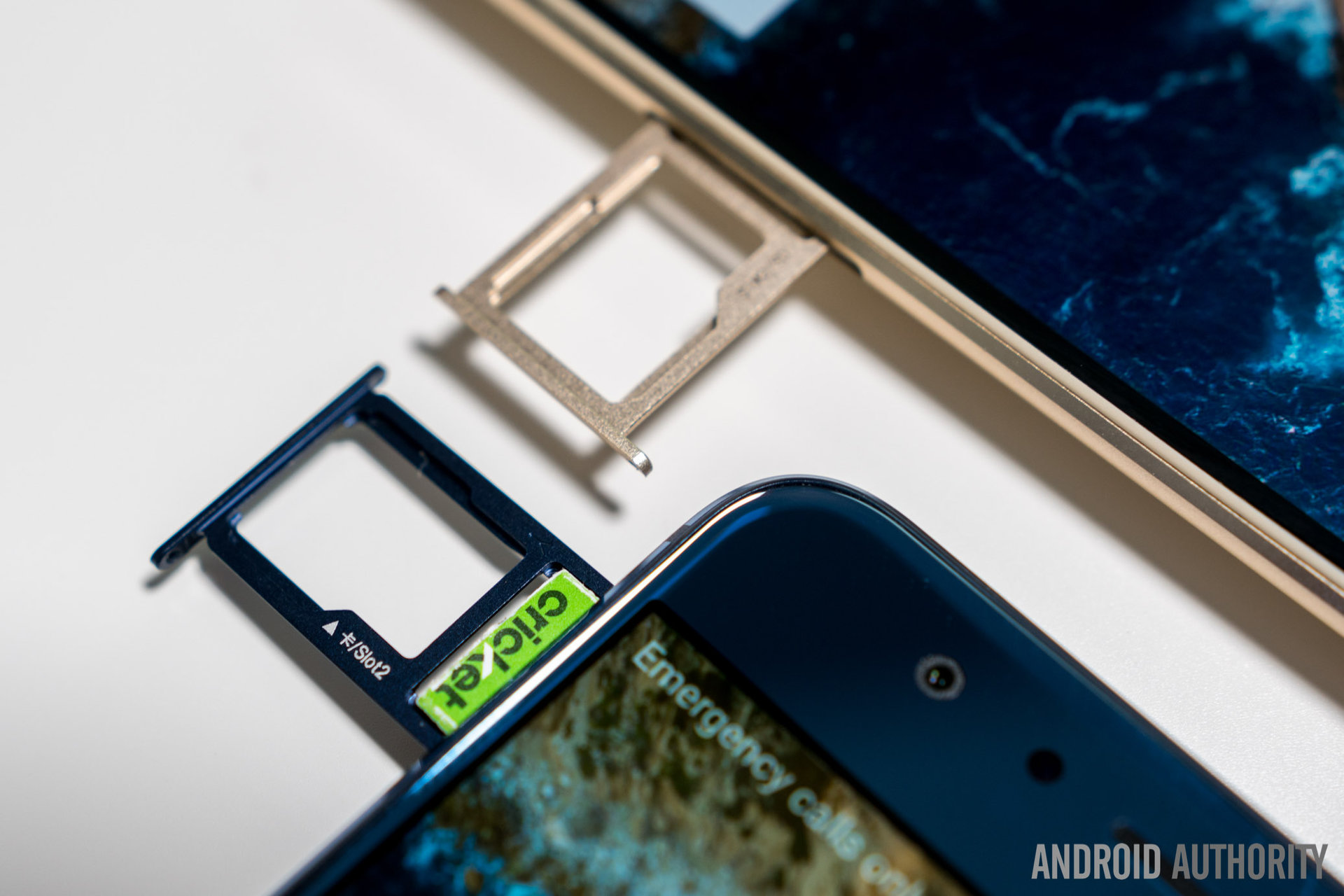
Both the Axon 7 and HONOR 8 feature similar connectivity options: USB Type-C, 802.11ac, Bluetooth 4.2, and NFC. Both phones are also unlocked and dual-SIM, and are fully compatible with AT&T and T-Mobile.
If you’re willing to give up the second SIM card slot on either device, you can expand the storage with a microSD card, up to 128 GB. The ZTE Axon 7’s base model includes 64 GB of internal storage, but you’ll have to pay an extra $50 for the HONOR 8’s 64 GB model. Otherwise, you’ll have 32 GB onboard with the base model.
Both phones provide fast and accurate fingerprints, and both readers are positioned on the back of each device. The HONOR 8 does something a bit unique, however, as its reader doubles as a tactile button or, as HONOR is calling it, a “smart key.” This is a very clever design as you can program different shortcuts including flashlight, screenshot, or voice recording to tap, double tap, and hold. You can also have it open an app like Pokemon Go instead, if you find that useful.
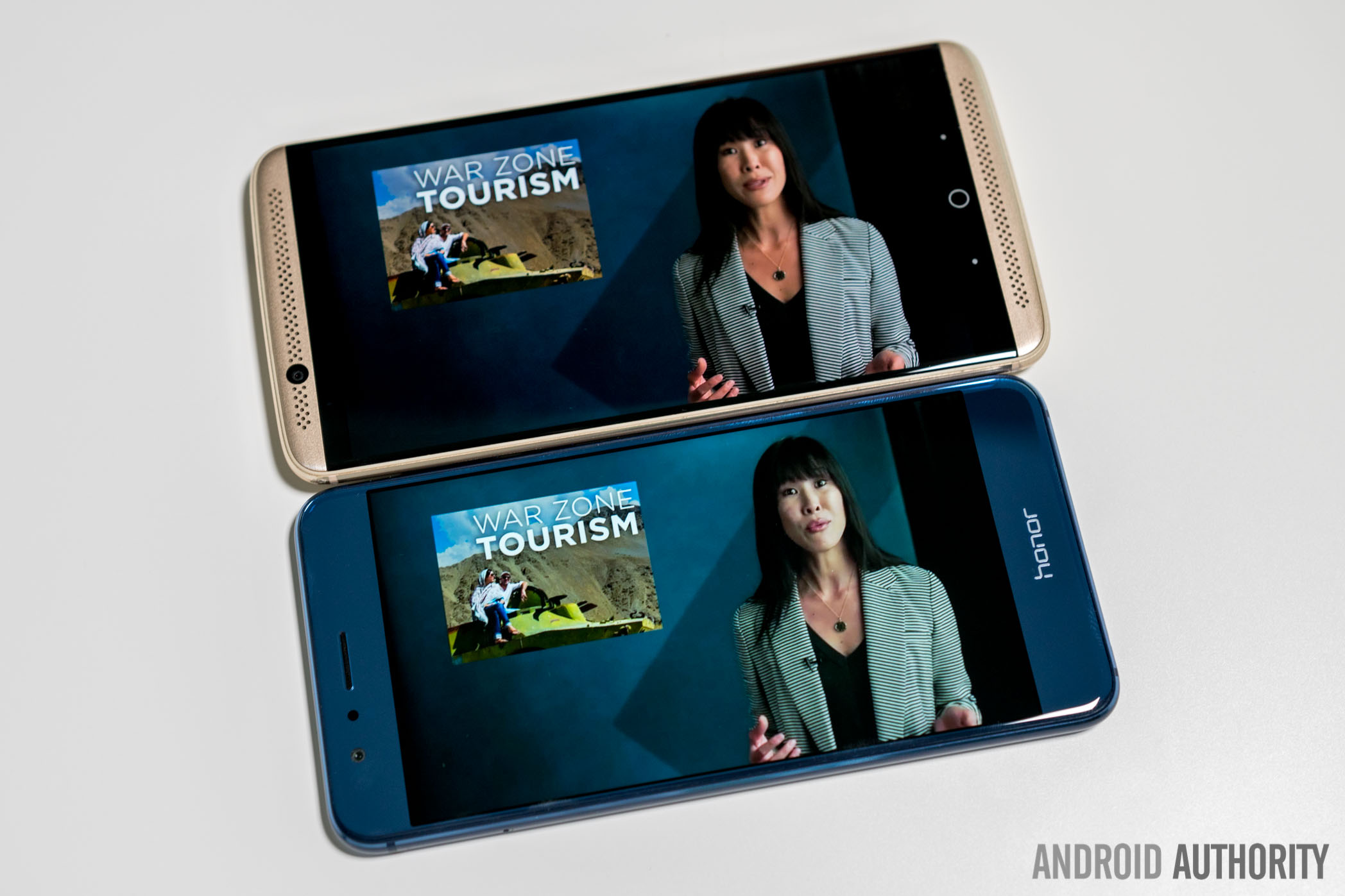
When it comes to audio, the ZTE Axon 7 is a clear winner. As detailed in our full review, the Axon 7 includes dual independent Hi-Fi audio chips for listening and recording. Audio does sound slightly better, too, even when using a cheap pair of headphones. This could be a big selling point if you have a good pair of headphones and like to listen to music a lot.
The Axon 7's speakers are louder, fuller, more immersive, and less distorted
The Axon 7’s dual stereo front-facing speaker setup is also significantly better than the HONOR’s 8 single side-firing speaker. They are louder, fuller, more immersive, and less distorted. If you care about the external speakers, the Axon 7 will likely be an easy choice.
Battery Life
Representative battery life test results (first two: ZTE Axon 7, last two: HONOR 8):
For fast charging, the Axon 7 includes support for Quick Charge 3.0 for a 50% charge in 30 minutes. The HONOR 8, on the other hand, can get about a 47% charge in 30 minutes with the included 9V/2A charger. Unfortunately, the HONOR 8 only does fast charging over the factory included charger, so it’d be difficult to get fast charging in a second wall charger or in a car charger. Since Quick Charge 3.0 is much more ubiquitous, this isn’t a problem with the Axon 7.
Camera
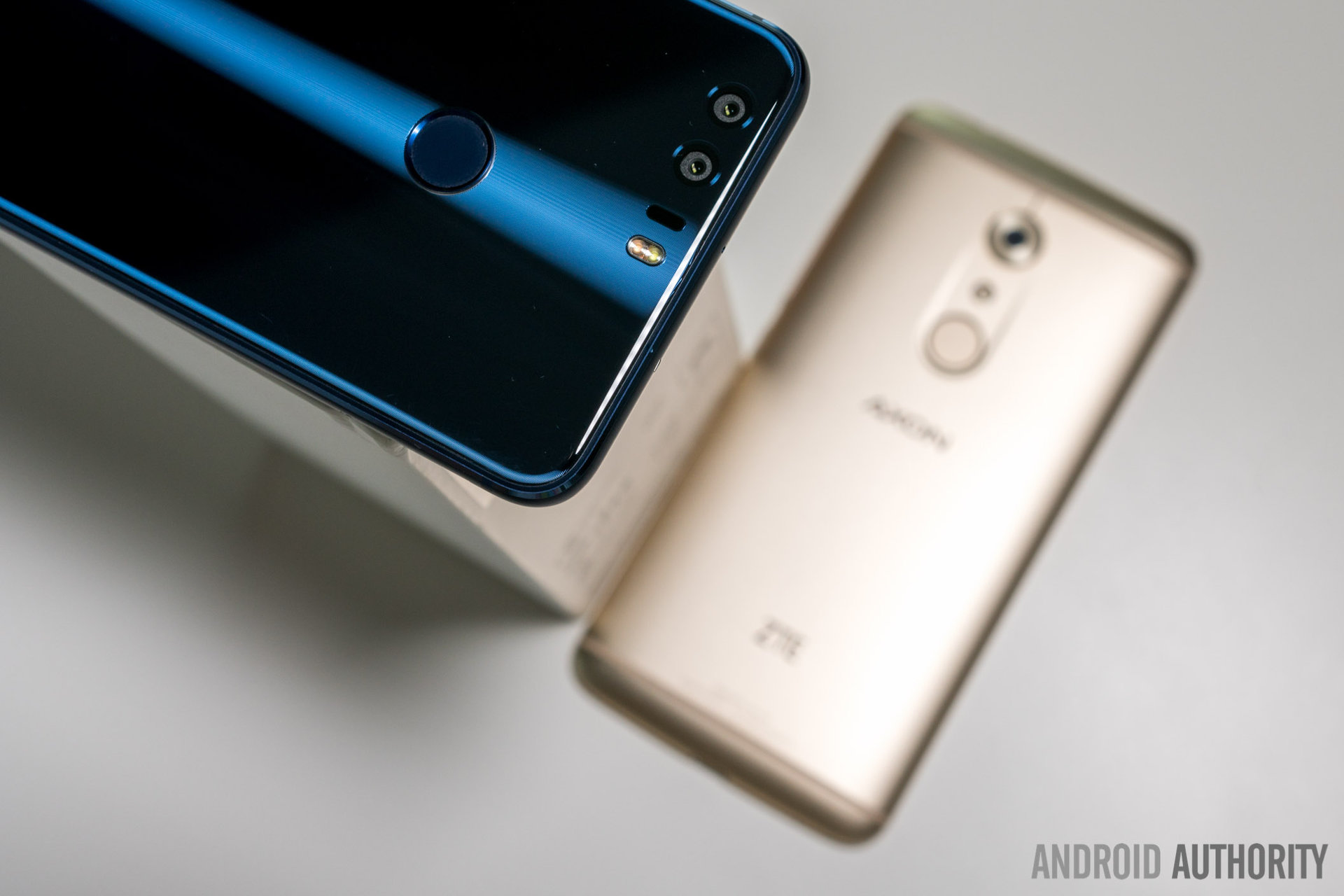
While the Axon 7 includes a single lens 20 MP f/1.8 rear camera with optical image stabilization, the HONOR 8 takes a different approach with a dual lens 12 MP f/2.2 setup with hybrid autofocus. The HONOR 8’s configuration consists of one color lens and another monochrome lens, which, according to HUAWEI helps deliver better, crispier looking photos.
In a blind A/B test, I chose the HONOR 8's daytime images about 65% of the time
And, for the most part, the HONOR 8’s camera does perform better than the Axon 7’s. In a blind A/B test, I chose the HONOR 8’s daytime images about 65% of the time. Obviously, situations vary so it makes sense that I still preferred the Axon 7’s daytime images about 35% of the time.
With that said, the HONOR 8 generally produces images with better dynamic range, crispier details, and more accurate color reproduction. The Axon 7’s colors seemed more saturated and punchy, which I preferred in some scenarios, but how much you do will depend entirely on your personal preferences.
The HONOR 8’s lead is further noticeable when shooting in low-light. Although the Axon 7 has the wider f/1.8 aperture, the HONOR 8 has larger pixels which translates to more light per pixel.
Low-light images taken with the Axon 7, while slightly sharper, generally have muted colors and noticeable vignetting. There’s also an excessive amount of noise reduction taking place, which doesn’t look so good.
That’s not to say that the HONOR 8 is a “low-light champ,” as the images it produces are still fairly soft, noisy, and generally not appealing. However, it’s one of the best low-light performers we’ve seen at this price.
For video recording, however, the Axon 7 provides better results partially thanks to its higher-resolution 4K video recording. The HONOR 8 maxes out at 1080P, and, even if you ignore resolution, the Axon 7’s video has remarkably better colors and a more accurate exposure.
ZTE Axon 7 Camera Samples
HONOR 8 Camera Samples
So, to recap, the HONOR 8’s camera generally performs better when taking photos, whereas the Axon 7’s does better with video. I do prefer the Axon 7’s camera app to the HONOR 8’s as it feels more polished and, while it doesn’t match the number of modes offered by the HONOR 8, it’s nicer and not as overwhelming to use.
Software
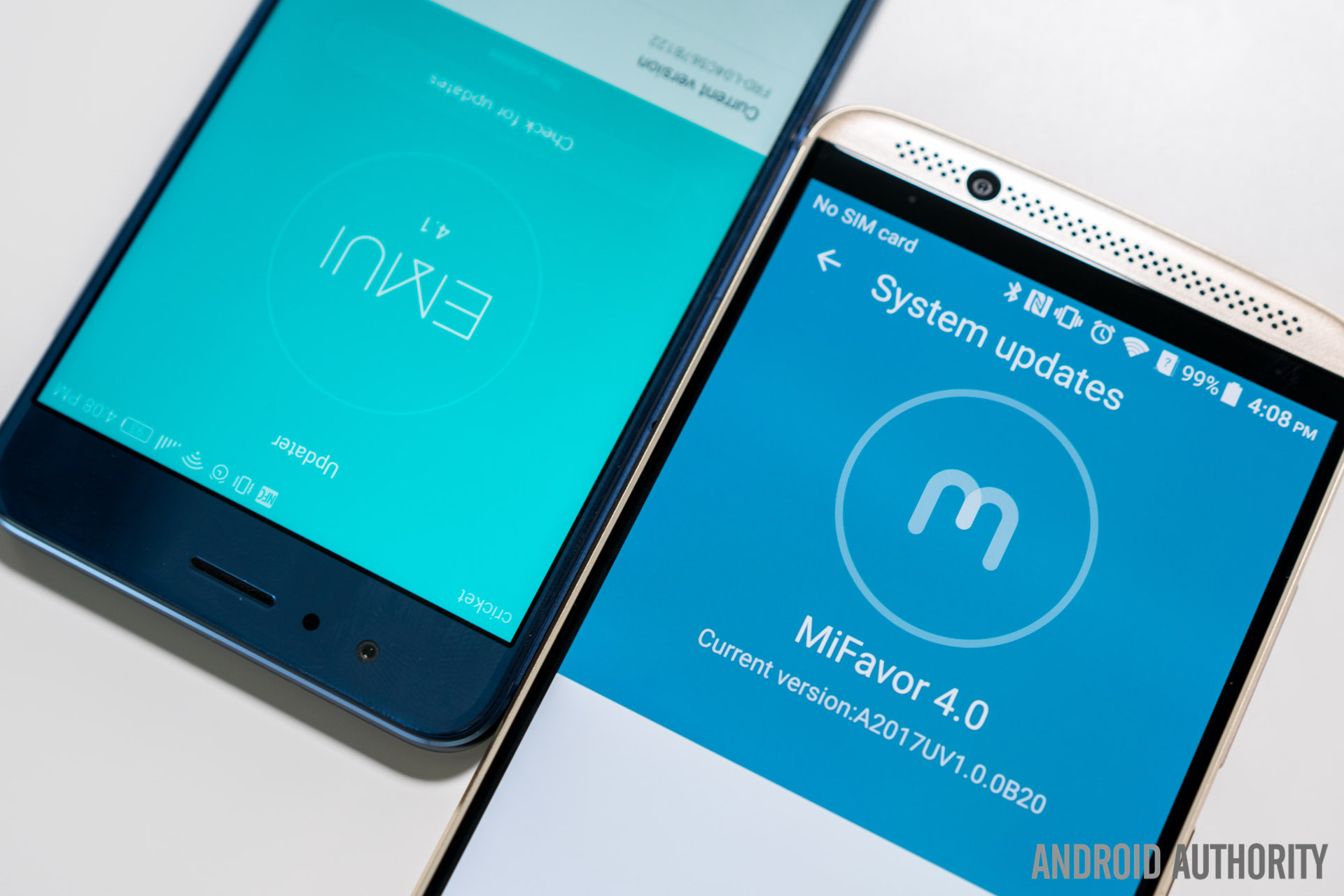
Although the Axon 7’s software experience isn’t perfect and could use a bit of polish, the HONOR 8’s software feels very different from what you’d expect from Android and isn’t tailored for the US market. For example, the Axon 7 has an app drawer while the HONOR 8 does not. The Axon 7 incorporates a material design-esque notification panel and settings menu whereas the HONOR 8 tries to mimic iOS. The Axon 7 only ships with a couple of bloatware apps while the HONOR 8 ships with many. The list goes on.
Huawei’s uninspired software approach isn’t inherently wrong, but it seems very ill-prepared and quirky. For instance, HUAWEI has implemented an entirely different scrolling mechanic than stock Android, which is smoother but slower. It looks pretty nice, but you have to wait for the inertia scrolling to completely stop in order to select something. This is incredibly frustrating in day-to-day use, as you’ll find yourself having to repeatedly tap on something until the phone finally responds.
Of course, there’s also areas in the Axon 7’s software that aren’t perfect, like on the lock screen, where you have to press a notification bell each and every time you want to view your notifications. There are some obscure areas where the UI feels somewhat questionable as well.
It seems that ZTE has spent much more time refining their software than HUAWEI
However, at the end of the day, it seems that ZTE has spent much more time refining their software than HUAWEI. Almost all of the things I liked about EMUI were implemented either similarly or better in MiFavor UI, so it’s very difficult to recommend HUAWEI’s software in this comparison.
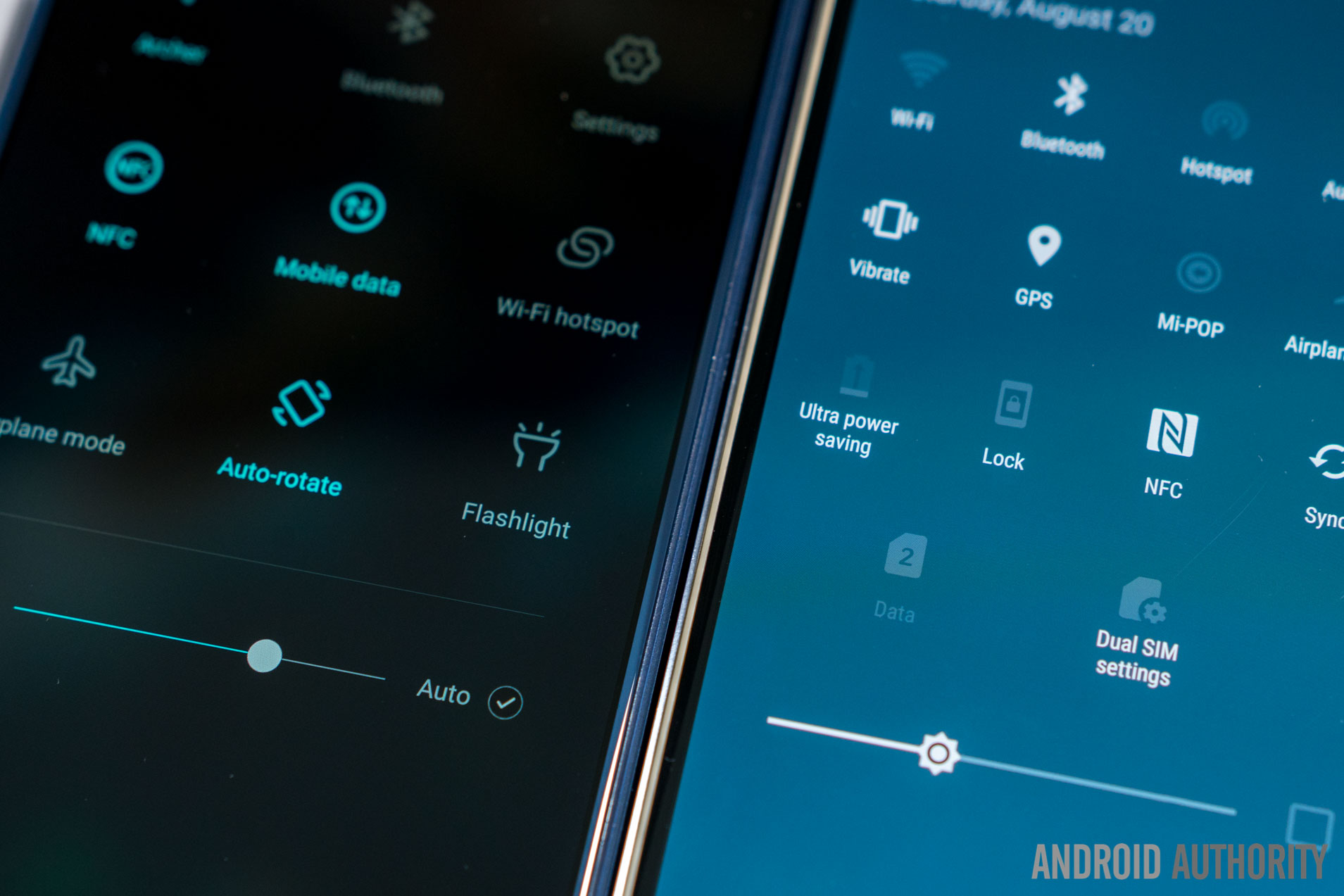
With that said, HUAWEI’s recent commitment to software updates and support is commendable. With the HONOR 8, you’re promised to receive new features every three months for the first year, and then security and bug fix updates for an additional year. It’s tough to say how much these updates will improve the HONOR 8’s software experience, but it’s still great to see HUAWEI at least trying.
Then again, ZTE is taking an equally ambitious approach to updates and has confirmed Google Daydream VR support, as well the promise of an update to Android 7.0 Nougat in the near future. Though no exact timeframe has been given, ZTE claims that its phone will be one of the first to run Daydream, and considering Daydream requires Android 7.0 Nougat, we can assume that the update should be coming in the near future.
Gallery
Pricing and availability
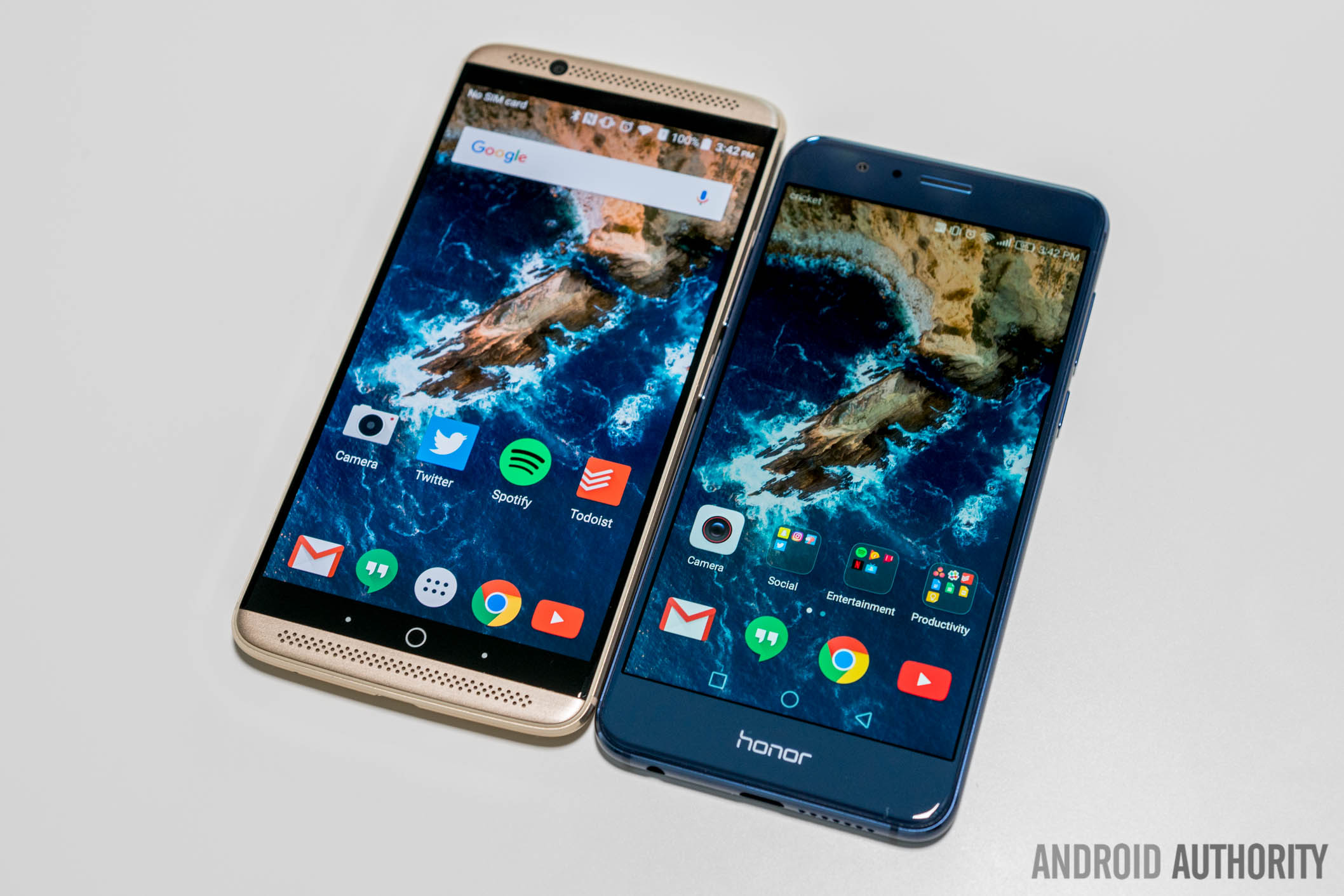
As of the time of writing, there is a promotion running for the HONOR 8, where if you pre-order the phone, you’ll also receive a $50 gift card. That’s definitely not a bad deal!
For warranty, both smartphones offer notably unique coverage. With the HONOR 8, you receive three months of non-deductible protection against cracks and a one year standard warranty. The Axon 7 includes Axon Passport 2.0, which provides a two-year premium warranty. Although there is a deductible with the Axon 7’s warranty, you’re getting a much longer coverage period as well as unlimited out-of-warranty repairs. There’s also free advanced exchange and free two-way shipping.
Conclusion
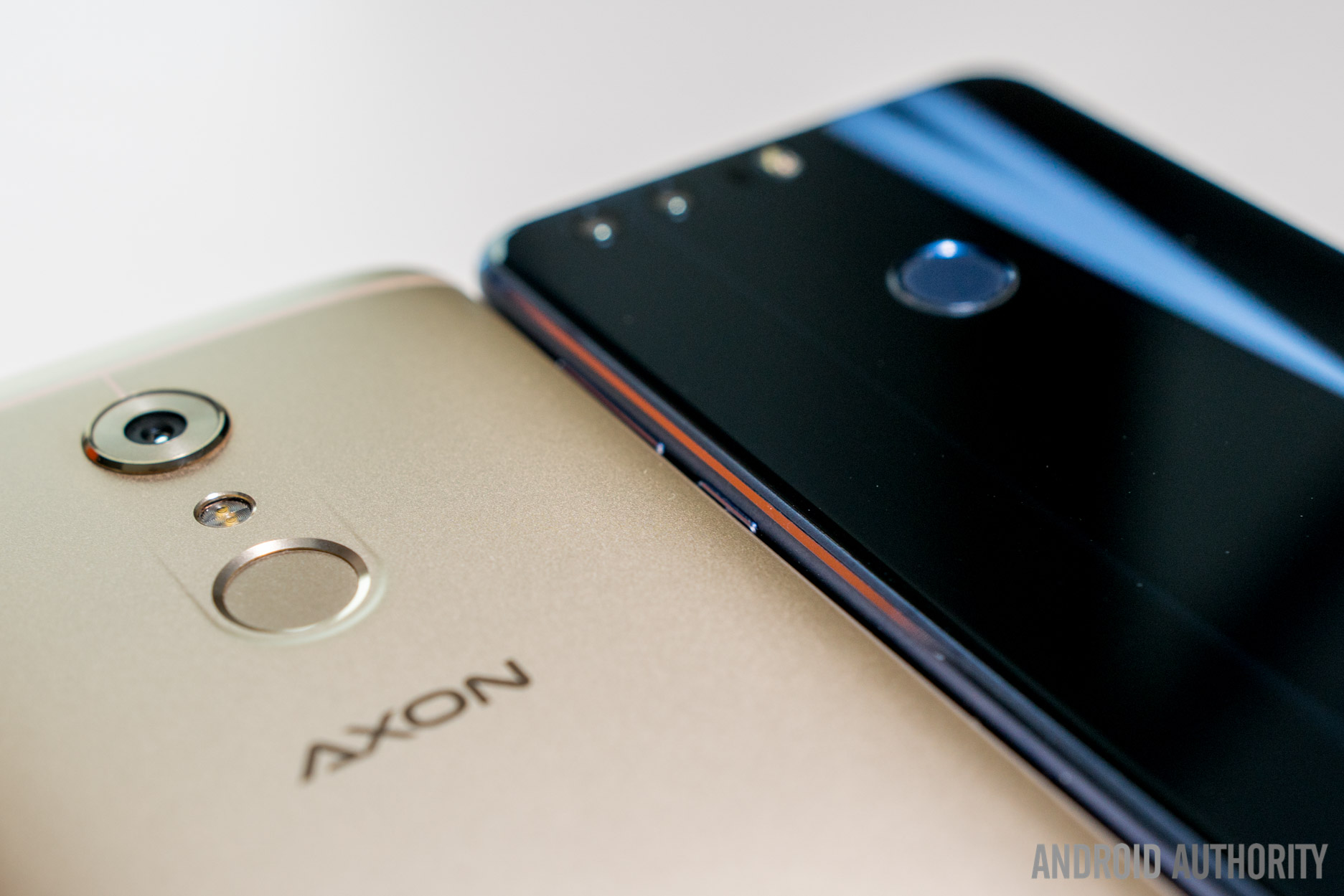
Both ZTE and HUAWEI have created excellent affordable flagships worthy of your consideration. Although they may have a few drawbacks in comparison to more expensive flagship smartphones like the Galaxy S7, their affordable prices largely extenuate our complaints.
If you’d like a smaller phone with a better camera and IR blaster, the HONOR 8 is likely the best choice for you. However, if you’d rather have a better audio experience, better battery life, and a better software experience, you can’t go wrong with the ZTE Axon 7.
Related:
- ZTE Axon 7 review
- ZTE Axon 7 hands on
- HONOR 8 hands on
- HONOR joins the ‘flagship killer’ fray with the HONOR 8
We hope that our comparison between these two affordable flagships has made your decision at least a little bit easier. Please do let us know which of these smartphones you prefer more and why in the comment section below!